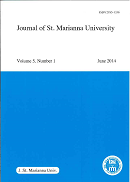Volume 12, Issue 1
Displaying 1-8 of 8 articles from this issue
- |<
- <
- 1
- >
- >|
original article
-
2021Volume 12Issue 1 Pages 1-8
Published: 2021
Released on J-STAGE: August 03, 2021
Download PDF (466K) -
2021Volume 12Issue 1 Pages 9-14
Published: 2021
Released on J-STAGE: August 03, 2021
Download PDF (359K) -
2021Volume 12Issue 1 Pages 15-18
Published: 2021
Released on J-STAGE: August 03, 2021
Download PDF (698K) -
2021Volume 12Issue 1 Pages 19-28
Published: 2021
Released on J-STAGE: August 03, 2021
Download PDF (2654K) -
2021Volume 12Issue 1 Pages 29-34
Published: 2021
Released on J-STAGE: August 03, 2021
Download PDF (6079K)
case report
-
2021Volume 12Issue 1 Pages 35-43
Published: 2021
Released on J-STAGE: August 03, 2021
Download PDF (3158K) -
2021Volume 12Issue 1 Pages 45-49
Published: 2021
Released on J-STAGE: August 03, 2021
Download PDF (195K) -
2021Volume 12Issue 1 Pages 51-55
Published: 2021
Released on J-STAGE: August 03, 2021
Download PDF (2019K)
- |<
- <
- 1
- >
- >|
